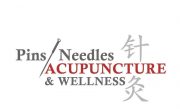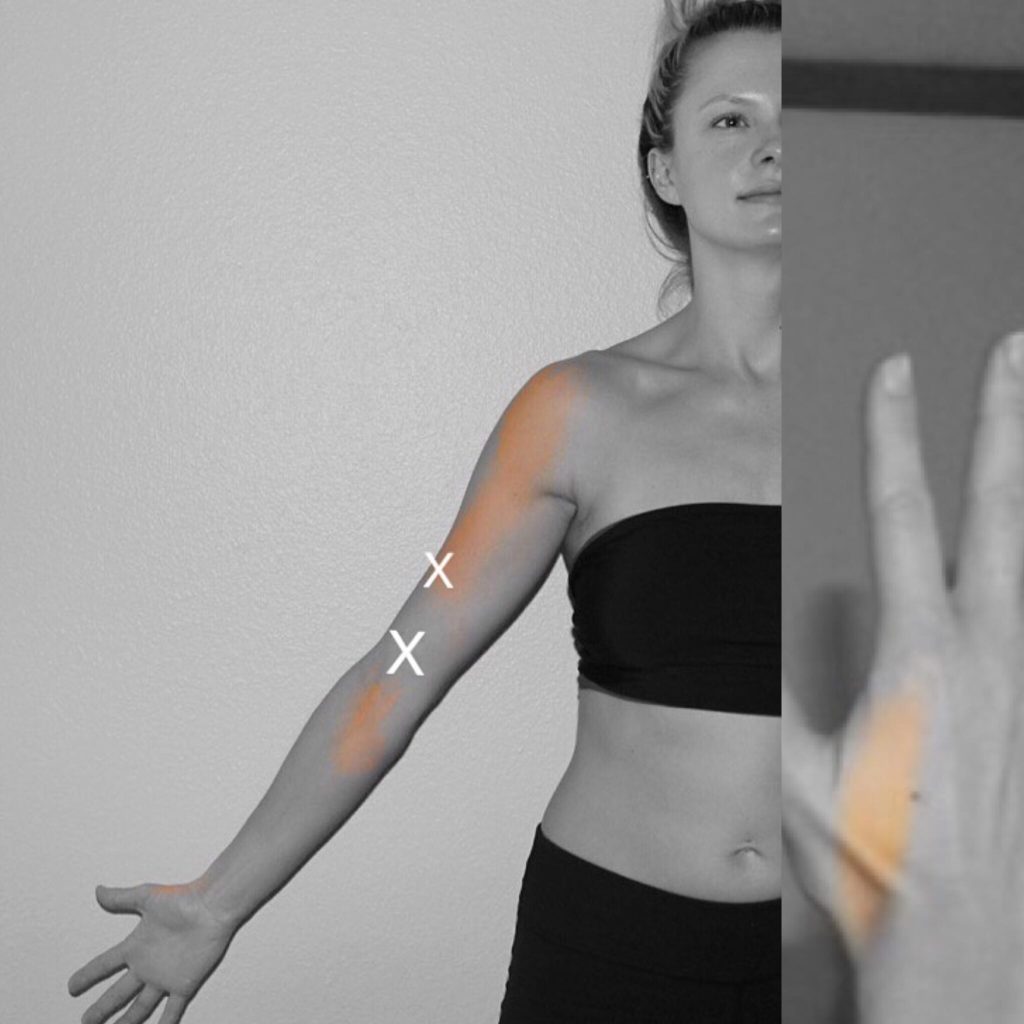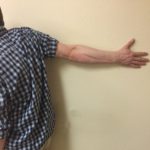When we think of treating shoulder, elbow, and hand pain, many practitioners do not often consider Brachialis, however, it can be a very effective trigger point to treat. Considered a prime mover for elbow flexion, brachialis lays under the more commonly thought of biceps brachii. Brachialis originates from the lower half of the humerus (anterior aspect) and travels over the cubital fossa to attach to the coronoid process of the ulna and the ulnar tuberosity. The trigger points in brachialis can be easily palpated and well accessed with acupuncture needles.
 The common trigger points of brachialis are palpated when the patient is supine with passive elbow flexion and the forearm is pronated. Palpate the bicep tendon and then travel superior and lateral to the bicep (essentially underneath) to note the taut bands of the brachialis. When learning to find these trigger points, it is important to differentiate the biceps from the brachialis. This can be easily done by manual muscle testing. While both muscles perform elbow flexion, the biceps also perform supination and shoulder flexion. If resisted supination is performed, the brachialis will not contract but the biceps will. This simple maneuver can help assure muscle identification between the two.
The common trigger points of brachialis are palpated when the patient is supine with passive elbow flexion and the forearm is pronated. Palpate the bicep tendon and then travel superior and lateral to the bicep (essentially underneath) to note the taut bands of the brachialis. When learning to find these trigger points, it is important to differentiate the biceps from the brachialis. This can be easily done by manual muscle testing. While both muscles perform elbow flexion, the biceps also perform supination and shoulder flexion. If resisted supination is performed, the brachialis will not contract but the biceps will. This simple maneuver can help assure muscle identification between the two.
Once the practitioner has palpated the trigger points, needling the brachialis can be performed. My preferred method is to isolate the muscle between two fingers (compressing muscle and spreading skin), then insert the needle as shown in our YouTube video. The depth of insertion varies based on the patient body habitus. To consider how much twitch may be needed see last week’s post!
Looking at the trigger point patterns, brachialis has referrals to the shoulder, elbow, and hand, similar to that of biceps. The taut bands of brachialis can often be even more pronounced than biceps trigger points. More interesting is to consider what kind of patients may have certain active trigger points vs those that are present in others. For example, the athlete that performs a great deal of pulling motions (CrossFit, gymnasts, grappling) is a definite candidate for the brachialis trigger points, as is the body builder. Occupational hazards may be landscapers or mail carriers as they both often work with prolonged elbow flexion. The only function of Brachialis is elbow flexion, so any activity that is reliant on sustained elbow flexion can create these trigger points.
Simple home care methods can include self-massage and stretching. One of the most efficient methods to perform self-massage on brachialis is with a lacrosse ball (or I very much love “Rock Balls”). The patient can place the ball between the wall and their brachialis and apply tolerable pressure to the trigger point. When instructing patients on how to do this, I recommend demonstration and observation to make sure it can be performed correctly in a pain-free manner. There are also several ways to stretch the brachialis (see photo below for two ways) depending on the mobility level of the patient. A combination of home care and Trigger Point Acupuncture can be very effective at dealing with Brachialis trigger points.
If you enjoyed this please click subscribe!
The preceding is for educational purposes only and is not intended to treat or diagnose any disease. Trigger point needling should only be performed by those with adequate training and license to do so. The author is not responsible for your actions.



